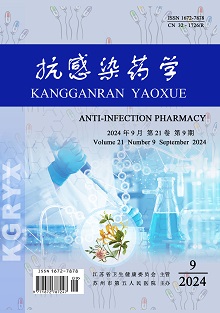ZHAO Fang-li, ZHOU Xiao-xia, CHEN Jun-yi, ZHU Li-hong
Objective: To explore the mechanism of action of Shashen Maidong decoction in treatment of viral pneumonia using network pharmacology and molecular docking technology, and provide reference for further research on Shashen Maidong decoction. Methods: The active ingredients and their effect targets in Shashen Maidong decoction were obtained from the Traditional Chinese Medicine Systems Pharmacology Database (TCMSP), and gene targets associated with viral pneumonia were obtained from databases such as GeneCards, OMIM. The common targets between the active ingredients and viral pneumonia were obtained. Protein-protein interaction (PPI) network analysis was performed to screen for core targets, and Gene Ontology (GO) functional analysis and KEGG pathway enrichment analysis were used to screen the biological processes and related pathways through which Shashen Maidong decoction may exert effects on viral pneumonia. Finally, molecular docking technology was used to analyze the binding affinity between key ingredients and their targets. Results: A total of 124 active ingredients and 248 corresponding effect targets of Shashen Maidong decoction were screened from TCMSP. 524 gene targets associated with viral pneumonia were obtained from GeneCards, OMIM and other databases. Among them, there were 75 common targets. PPI network analysis of 75 common targets yielded 34 core targets. GO functional analysis suggested that Shashen Maidong decoction may exert anti-viral pneumonia effects by regulating inflammation and cell activity. KEGG pathway enrichment analysis revealed that Shashen Maidong decoction may act for treatment of viral pneumonia through pathways such as AGE-RAGE signaling pathway in diabetic complications, T cell receptor signaling pathway, NF-κB signaling pathway, IL-17 signaling pathway, TNF signaling pathway, and trypanosomiasis signaling pathway. Molecular docking results showed that six key ingredients of Shashen Maidong decoction, quercetin, kaempferol, beta-carotene, naringenin, arachidonic acid, and stigmasterol, demonstrated good binding affinity with the key targets of viral pneumonia, including tumor necrosis factor (TNF), interleukin-6 (IL-6), IL-1β, protein kinase B (AKT1), albumin (ALB), and Chemokine (CC-motif) ligand 2 (CCL2), with binding energies all less than -5 kJ/mol. Conclusion: Quercetin, kaempferol, beta-carotene, naringenin, arachidonic acid, and stigmasterol may be the main active components of Shashen Maidong decoction in the treatment of viral pneumonia, while TNF, IL-6, IL-1β, AKT1, ALB, and CCL2 may be its primary effect targets.
